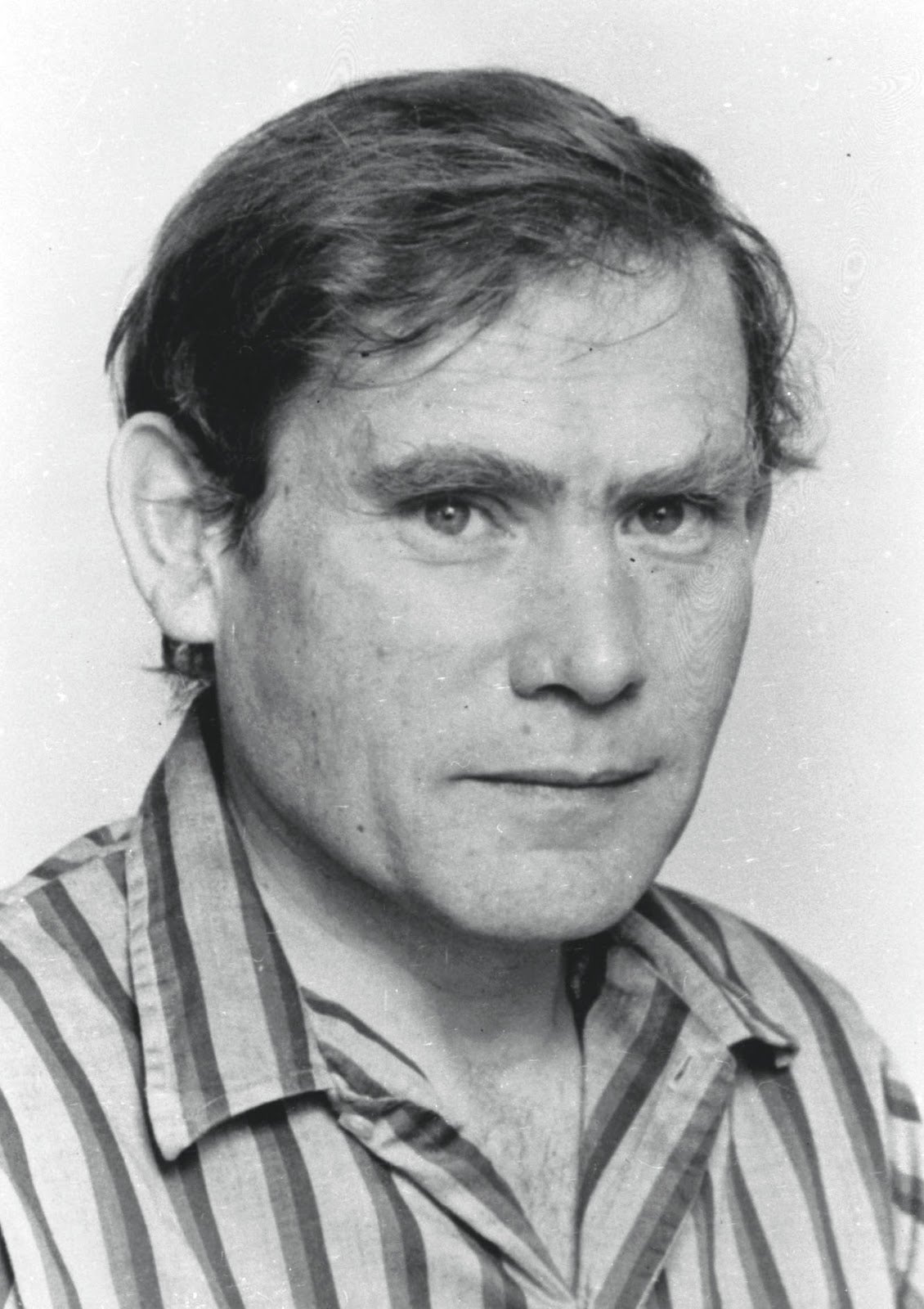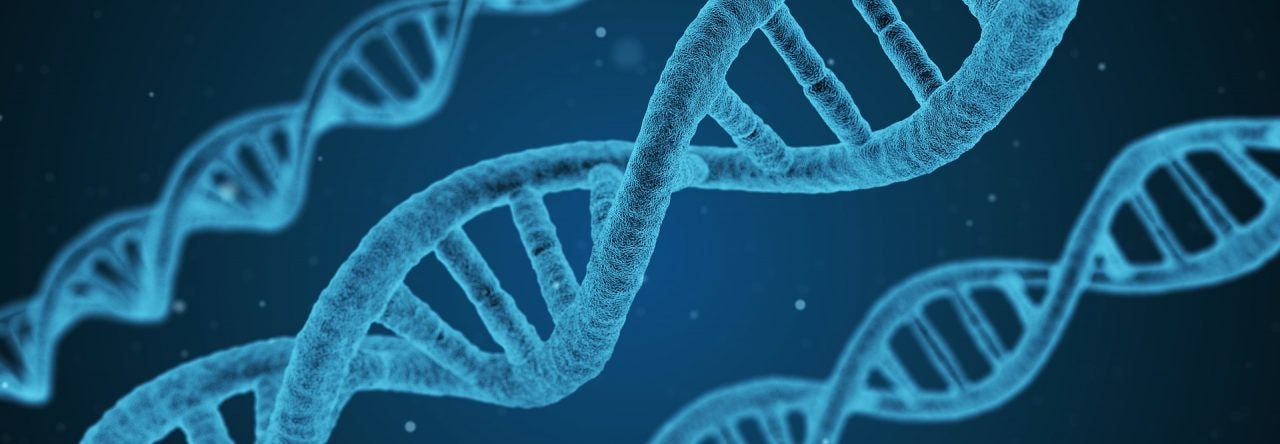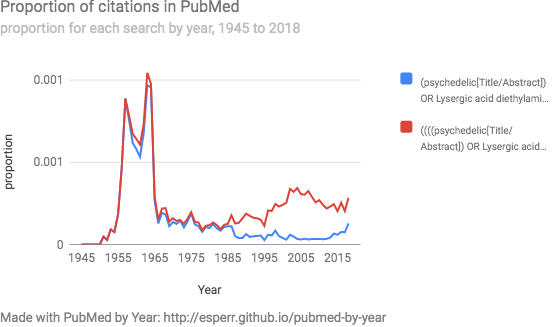Written by: Hongyan Hao
Edited by: Ellen Osborn
All biology undergraduates learn the central dogma: DNA makes RNA and RNA makes protein. However, not long ago, this dogma was intensely debated because it was unclear if DNA or protein contained the genetic material of the cell. The famous double helix model opened the door to molecular biology in 1953. But it took an additional eight years to discover the messenger RNA. Sydney Brenner, who shared the 2002 Nobel Prize in Physiology or Medicine, was a key traveler in this long journey.

Portrait photograph of Sydney Brenner, c. 1960s,
Copyright: MRC Laboratory of Molecular Biology
As described in his autobiography, My life in Science, Brenner thought about how genetic information guides protein synthesis even before he saw the double helix model in April 1953 at Cambridge. Inspired by the similar step size of nucleic acid (3.5 angstrom units) and amino acids (3.3 angstrom units) pointed out in William Astbury’s 1947 paper, Brenner developed his “pet theory” that amino acids join together at the same time nucleic acid strands are synthesized. At the time, people knew that DNA sequences defined proteins, but it was not clear whether there was an intermediate molecule between DNA and protein. With the discovery that protein synthesis occurs at ribosomes, it was largely assumed that the intermediate was the ribosomal RNA (rRNA). However, some people were skeptical about this. One reason for this skepticism was that in bacteria, the ratio of the amount of G+C to A+T in DNA varied a lot between bacteria species, while in rRNA the variation was trivial.
Another concern was what Brenner called the “paradox of the prodigious rate of protein synthesis.” While working with bacteriophages at Cambridge, Brenner and Francis Crick observed that after phage infection, 70% of protein made in the infected bacteria was the phage head protein instead of the bacteria protein. If rRNA is the intermediate for protein synthesis, a significant increase of new rRNA should be observed. However, there was no detectable rRNA synthesis. In 1956, Elliot Volkin and Lazarus Astrachan discovered that a small amount of short-lived RNA resembles the phage DNA in base composition rather than the bacterial DNA after phage infection, however, they were kind of focused on the idea that these new RNA could be the precursor of phage DNA.
Four years later, the secret of the mysterious Volkin-Astrachan RNA was uncovered in Brenner’s living room. It was during an informal meeting of a small group of scientists, including Crick and François Jacob from Institut Pasteur in France. Jacob described the new findings from the famous Pardee, Jacob and Monod (PaJaMo) mating experiment. Normally, bacteria synthesize galactosidase in a medium containing lactose. However, the lac- mutant cannot digest lactose until the gene that encodes the galactosidase is transferred into the cell. Galactosidase synthesis is extremely rapid, happening within minutes. Interestingly, when they let the bacteria produce galactosidase for some minutes and then destroyed the transferred DNA, galactosidase synthesis stopped immediately. These results ruled out the possibility of any stable intermediate like rRNA because if the intermediate were stable, galactosidase synthesis should have continued for a while after the gene was removed. Upon hearing Jacob’s description, suddenly, Brenner got excited and shouted to Crick, “Volkin-Astrachan; information intermediate; it’s short-lived; a short-lived intermediate! It must be! Look at the way it turns over in phage!”
The next step was to plan experiments testing whether the short-lived RNA was the intermediate messenger that guides protein synthesis. If Brenner’s hypothesis was correct, then the new RNA intermediate synthesized after phage infection should be associated with the old bacterial ribosomes.To do this, they needed a way to distinguish between the ‘new’ and ‘old’ ribosomes. Lucky for them, Matthew Meselson and Frank Stahl at California Institute of Technology (Caltech) developed the density gradient centrifugation experiment and successfully separated the isotope N15-labeled DNA from the N14 DNA in a caesium chloride solution. The RNA intermediate experiment could use this approach to label bacterial ribosomes with isotopes before phage infection and resuspended in the medium without isotopes right after infection, which would make the old ribosomes heavier than the new ribosomes and therefore distinguishable by density gradient centrifugation.
Jacob and Brenner went to Matt Meselson’s lab in California the following summer to test their new hypothesis. The experiment that followed was, as described by Brenner himself, a “hilarious story”. The experiment itself was complex, isotopes were expensive, samples needed to be spun in the centrifuges for nearly 20 hours or more, and the centrifuges were unreliable. And they only had three weeks! The first problem Jacob and Brenner encountered was that the ribosomes were not stable and dissociated during sedimentation in the centrifuge. They tried to troubleshoot, but to no avail. They even thought of purifying ribosomes from Dead Sea bacteria because they already live in a high salt environment and might be more tolerant of the high concentration of caesium chloride. Unfortunately, their phage couldn’t infect the Dead Sea bacteria.
Frustrated and tired, they went to a nearby beach to, in Brenner’s own words, “rest their weary souls”. Jacob recalled this time in his autobiography: “There we were, collapsed on the sand, stranded in the sunlight like beached whales. My head felt empty. Growing, knitting his heavy eyebrows, with a nasty look, Sydney gazed at the horizon without saying a word.” Lying on the beach, it occurred to Brenner that magnesium stabilizes the ribosomes and the high caesium could displace the magnesium, making the ribosomes unstable! They ran back to the lab and set up their last-chance experiment of three samples with higher magnesium concentrations. During the chaos, Jacob dropped the radioactive phosphate in the water bath and the centrifuge broke down in the middle of the experiment! Luckily, they were able to borrow a centrifuge from a neighboring lab. Nervously, Brenner carried the rotor with the tubes to the cold room. He walked there because the elevator would shake the tubes, destroying the gradient he had worked so hard to create. In the end, they managed to finish the experiment and showed that the new radioactive RNA peaked at the same position with the old ribosomes! Later, these results were published in Nature in 1961, along with the discovery from James Watson’s lab that a fraction of rapidly labeled RNA of different sizes were associated with the ribosome active site (where protein synthesis happens). That same month, the term “messenger RNA” and it’s possible role in gene regulation was discussed in Jacob and Monod’s review article in Journal of Molecular Biology.
Even today, the exploration of messenger RNA never ends. I’m fascinated with how the friendship between scientists, critical thinking, effective communication, and collaboration all contributed to the discovery of messenger RNA. When we hear stories about scientific discoveries, it often sounds like a genius just appeared and came up with an idea that changed the world. But Sydney Brenner’s story shows that it’s not that simple. Scientists can make wrong hypotheses, create naive models and misinterpret results. Sometimes, experiments won’t work; sometimes people tell you not to try an experiment because it is unlikely to work; sometimes you get weird results; sometimes people question and laugh at your hypothesis. But sometimes you make fascinating discoveries. Sydney Brenner passed away in April 2019 at the age of 92. Brenner’s obsession with science, creative thinking, open mindedness, and persistent pursuit of answers will continue to inspire scientists like myself.
Sources:
- Brenner, Sydney. My Life in Science. London, 2001.
- Hernandez, Victoria, “The Meselson-Stahl Experiment (1957–1958), by Matthew Meselson and Franklin Stahl”. Embryo Project Encyclopedia (2017-04-18). ISSN: 1940-5030 http://embryo.asu.edu/handle/10776/11481
- Meselson, Matthew, and Franklin W. Stahl. “The replication of DNA in Escherichia coli.” Proceedings of the national academy of sciences 44.7 (1958): 671-682.
- Brenner, Sydney, François Jacob, and Matthew Meselson. “An unstable intermediate carrying information from genes to ribosomes for protein synthesis.” Nature 190.4776 (1961): 576-581.
- Gros, François, et al. “Unstable ribonucleic acid revealed by pulse labelling of Escherichia coli.” Nature 190.4776 (1961): 581-585.
- Morange, Michel. “What history tells us XLV. The ‘instability’ of messenger RNA.” Journal of biosciences 43.2 (2018): 229-233.
- Cobb, Matthew. “Who discovered messenger RNA?.” Current Biology 25.13 (2015): R526-R532.



